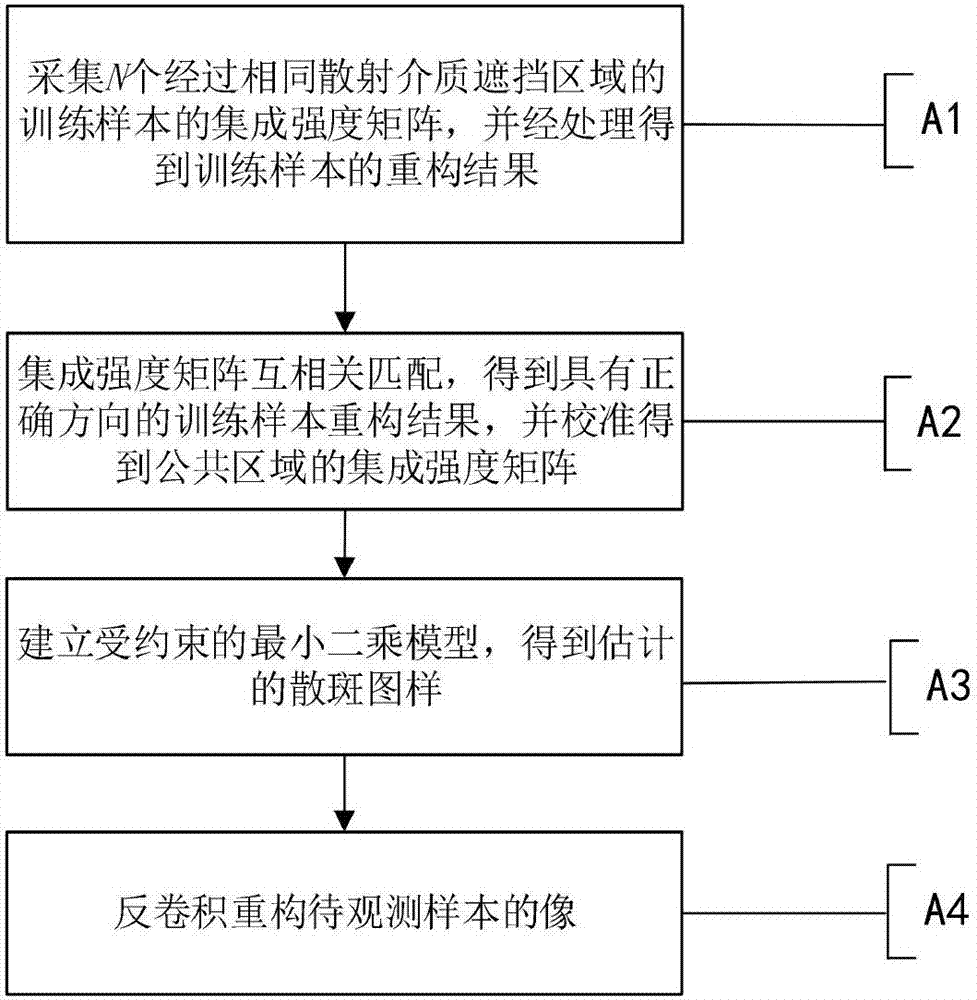Non-invasive scattering imaging method based on speckle estimation and deconvolution
A non-invasive, scattering imaging technology, applied in scattering characteristic measurement, optics, instruments, etc., can solve the problems of loss of original position and orientation information of samples, attenuation of phase recovery ability, instability of phase recovery algorithm, etc. The effect of reducing the number of training samples, efficient reconstruction, improving clarity and robustness
- Summary
- Abstract
- Description
- Claims
- Application Information
AI Technical Summary
Problems solved by technology
Method used
Image
Examples
Embodiment Construction
[0016] The present invention will be further described below with reference to the accompanying drawings and in combination with preferred embodiments.
[0017] Such as figure 1 As shown, the preferred embodiment of the present invention discloses a non-invasive scattering imaging method based on speckle estimation and deconvolution, including the following steps:
[0018] A1: Use a non-invasive imaging system based on speckle scanning and memory effect to collect N training samples that pass through the same scattering medium occlusion area The integrated strength matrix of The amplitude spectrum of the training sample is obtained through autocorrelation, Fourier transform, and square root processing, and the reconstruction result of the training sample is obtained by using the phase recovery algorithm
[0019] Specifically, when the training samples When arriving at the same scattering medium shielding area at different times, the integrated intensity matrix of each ...
PUM
 Login to View More
Login to View More Abstract
Description
Claims
Application Information
 Login to View More
Login to View More - R&D
- Intellectual Property
- Life Sciences
- Materials
- Tech Scout
- Unparalleled Data Quality
- Higher Quality Content
- 60% Fewer Hallucinations
Browse by: Latest US Patents, China's latest patents, Technical Efficacy Thesaurus, Application Domain, Technology Topic, Popular Technical Reports.
© 2025 PatSnap. All rights reserved.Legal|Privacy policy|Modern Slavery Act Transparency Statement|Sitemap|About US| Contact US: help@patsnap.com



